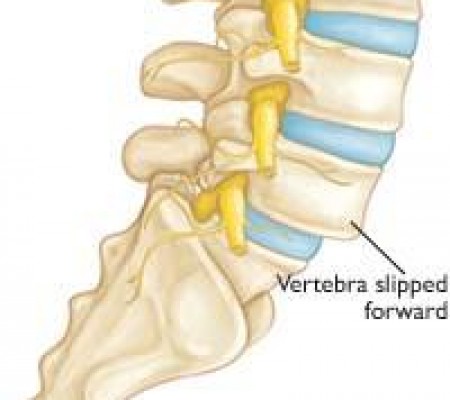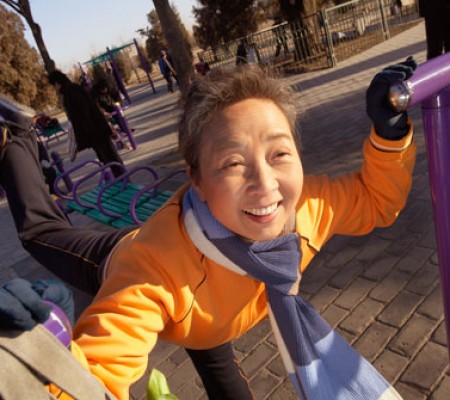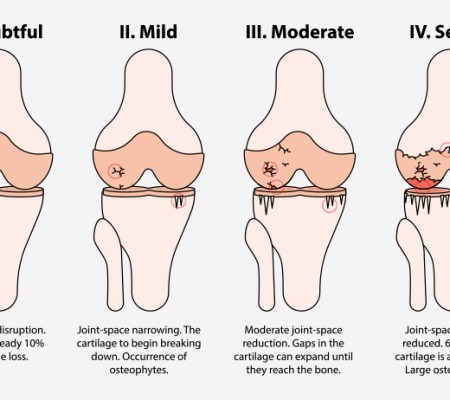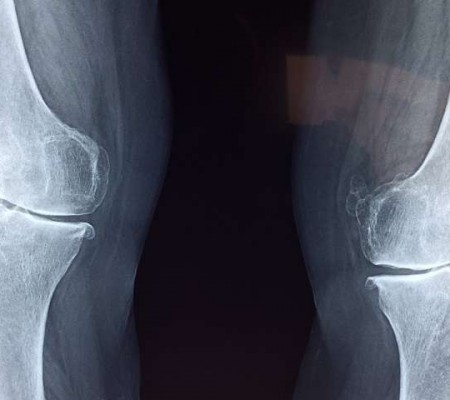REHABILITATION SERVICE FOR DEGENERATIVE JOINT DISEASE
What is Degenerative Joint Disease?
Joints, which are the points in the body where two bones meet, are what facilitates movement and provides stability to the musculoskeletal system. Within the joints, areas of cartilage support nearby bones by adding a cushioning of sorts and preventing them from grinding against one another. Joints bear a significant amount of the body’s weight and are regularly strained as an individual goes about their everyday activities. For this reason, joints are highly susceptible to gradual deterioration and injury.
Degenerative joint disease, commonly referred to as “osteoarthritis”, is a condition in which the shock-absorbing cartilage that cushions joints becomes inflamed, breaks down and is eventually lost. Osteoarthritis is extremely common, with more than 25 million people across the United States and 1/3 of adults over the age of 65 encountering significant degenerative joint disease.
Without treatment, degenerative joint disease usually becomes worse over time and can begin to affect all of the major joints in the body, including those in the spine, hands, hips and knees. By obtaining an accurate diagnosis and proactively addressing your osteoarthritis, you can often eliminate or alleviate debilitating symptoms and prevent the development of problematic secondary conditions.
Causes
The primary cause for degenerative joint disease is age and general wear and tear incurred due to the body’s natural aging process. However, certain factors can incite or exacerbate this condition, such as:
- Frequently lifting heavy objects or making strenuous movements, often due to manual labor and jobs requiring a lot of physical activity
- Congenital joint malformation
- Genetic predisposition and gender, as women are more likely to encounter osteoarthritis than men
- Joint injuries or unexpected traumas, such as those that may occur in a car accident or high-impact sport. Even if the wound has healed, it can increase your risk of developing osteoarthritis years later.
- Obesity or carrying extra weight
- Lack of exercise and regular activity
- Smoking
- Malnutrition
If you believe you may be at risk for contracting osteoarthritis, speak with one of our highly-acclaimed spine physicians about how to best prevent early onset or severe degenerative joint disease. By living mindfully and making minor adjustments, it is often possible to proactively manage the extent of cartilage deterioration.
Symptoms
Degenerative joint disease typically isn’t diagnosed until painful symptoms cause a patient to seek a medical examination, although the condition can develop for many years prior. Common symptoms of osteoarthritis include:
- Pain and stiffness around the affected area, especially in the morning or after a period of inactivity
- Localized swelling, redness and tenderness
- Limited mobility, including particular trouble with using eating utensils, getting in and out of chairs, dressing or putting on shoes
- Bone spurs
- A grating sensation when trying to move a joint
It is possible for osteoarthritis to encourage numerous joint-related conditions, including herniated discs, spinal stenosis and fractures. If a patient’s particular case of degenerative joint disease has progressed to this point, various symptoms such as back pain, muscle weakness and fatigue may occur. Speak with a medical professional as soon as you notice anything unusual. Obtaining a prompt and comprehensive diagnosis is the best way to maintain and improve your quality of life.
Our Minimally Invasive Treatment Approach
The team of highly-skilled physicians at Minimally Invasive SpineCARE® is fully committed to providing long-term solutions to your degenerative joint disease-related pain. Through personalized, patient-centric care and innovative treatment, we strive to ensure that those suffering from degenerative joint disease find relief.
During your initial consultation at one of our state-of-the-art facilities, our experienced specialists will carefully and compassionately evaluate your medical history and physical state. If it is suspected that degenerative joint disease is causing your symptoms, an imaging test like a CT scan, MRI or X-ray may be requested to obtain a concrete diagnosis. Blood tests and joint fluid analysis procedures may also help identify the extent of your osteoarthritis. Based upon the information gathered, Minimally Invasive SpineCARE® will design a personalized treatment plan to meet your unique needs and specifications.
Generally, we encourage exploring conservative treatments before opting for surgery. Many non-surgical methods of pain management and disease management can lessen the negative effects of osteoarthritis. When implemented effectively, the following strategies often allow patients to live the life they love without being seriously hindered by degenerative joint disease.
Exercise and Physical Therapy: By strengthening certain muscles and losing excess pounds, it is possible to reduce the amount of stress placed upon joints. Through moderate, targeted exercise, many men and women suffering from osteoarthritis experience reprieve from their symptoms. Guided exercises and physical therapy play a central role in any degenerative joint disease treatment plan.
Medication: Over-the-counter and prescription medications can often reduce the inflammation associated with degenerative joint disease, allowing patients to experience reduced pain so that they may undergo an exercise regimen and participate in other long-term osteoarthritis treatments. Localized cortisone injections may also help patients avoid osteoarthritis-related discomfort for substantial periods of time.
Additional Methods of Care: Using heating pads and ice packs in alternation, correcting your posture, wearing proper footwear and other concentrated efforts can often slow osteoarthritis and reduce its symptoms.
For some patients, the cartilage between bones has deteriorated drastically by the time they seek treatment. If the symptoms of degenerative joint disease are preventing them from living their life to the fullest, surgical intervention may be recommended.
At Minimally Invasive SpineCARE®, we offer a number of customizable minimally invasive laparoscopic surgeries to address degenerative joint disease. When compared to traditional open procedures, minimally invasive operations usually yield:
- Shortened recovery times, which allow patients to return to work, school and other activities more quickly
- Fewer potential complications
- Less post-operative pain
- A reduced risk of scarring
- Minimal blood loss and interference with soft tissues around the affected region
The surgical approach used will depend upon the preferences of the patient, as well as determining factors such as whether or not the individual has obesity or extensive adhesions (scar tissues) from a previous surgery. Because our surgeons are experienced in both traditional and minimally invasive operations, Minimally Invasive Best Care is able to offer whichever surgery best meets your individual needs.
Provide us with as many details as possible about the reason for requesting a physiotherapist.
Our team will connect with you to confirm your requirement and send a physiotherapist based on your needs. All our physiotherapists are uniformed and carry identification to help you know that you are indeed letting a trained professional from Best Care into your home.
Phone: 0937782677
Mail: bestcare.vltl@gmail.com
Facebook Page: Nursing at home in Ho chi Minh














